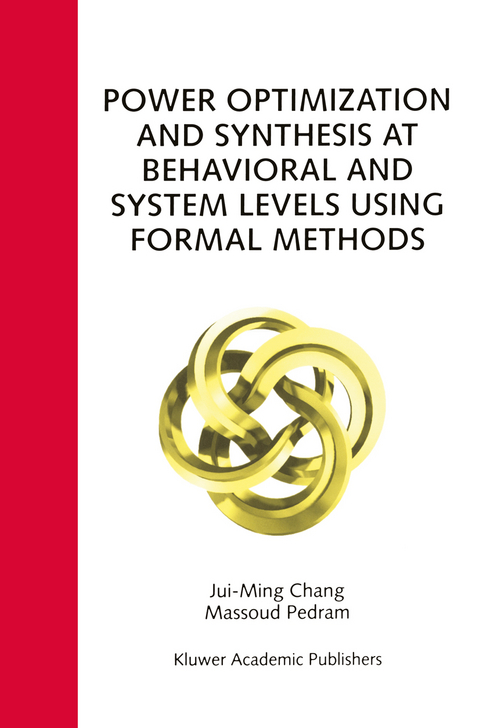
Power Optimization and Synthesis at Behavioral and System Levels Using Formal Methods
Springer-Verlag New York Inc.
978-1-4613-7368-1 (ISBN)
A new generation of power-conscious CAD tools are coming onto the market to help designers estimate, optimize and verify power consumption levels at most stages of the IC design process. These tools are especially prevalent at the register-transfer level and below. There is a great need for similar tools and capabilities at the behavioral and system levels of the design process. Many researchers and CAD tool developers are working on high-level power modeling and estimation, as well as power-constrained high-level synthesis and optimization. Techniques and tools alone are, however, insufficient to optimize VLSI circuit power dissipation - a consistent and convergent design methodology is also required.
Power Optimization and Synthesis at Behavioral and System Levels Using Formal Methods was written to address some of the key problems in power analysis and optimization early in the design process. In particular, this book focuses on power macro-modeling based on regression analysis and power minimization through behavioral transformations, scheduling, resource assignment and hardware/software partitioning and mapping. What differentiates this book from other published work on the subject is the mathematical basis and formalism behind the algorithms and the optimality of these algorithms subject to the stated assumptions.
From the Foreword:
`This book makes animportant contribution to the field of system design technologies by presenting a set of algorithms with guaranteed optimality properties, that can be readily applied to system-level design. This contribution is timely, because it fills the need of new methods for a new design tool generation, which supports the design of electronic systems with even more demanding requirements'.
Giovanni De Micheli, Professor, Stanford University
1. Introduction.- 1.1 Low Power Design.- 1.2 Review of Behavioral Synthesis Techniques.- 1.3 Hardware/Software Co-design.- 1.4 Organization of the Book.- 2. Register Allocation and Binding.- 2.1 Introduction.- 2.2 Switching Activity Calculation.- 2.3 Register Binding with Minimum Power Dissipation.- 2.4 Experimental Results.- 2.5 Chapter Summary.- 3. Power-Optimal Module Allocation and Binding.- 3.1 Introduction.- 3.2 Terminology and Overview.- 3.3 Switching Activity Calculation.- 3.4 Module Binding with Minimum Power Dissipation.- 3.5 Multi-Commodity Flow Formulation.- 3.6 Experimental Results and Discussions.- 4. Multiple Supply Voltage Scheduling.- 4.1 Introduction.- 4.2 Related Problems.- 4.3 Energy-delay Curves.- 4.4 The Scheduling Algorithm.- 4.5 Functionally Pipelined Data-path.- 4.6 Experimental Results.- 4.7 Chapter Summary.- 5. Co-Design of Communicating Systems.- 5.1 Introduction.- 5.2 Related Work.- 5.3 Process Decomposition in a Task Graph.- 5.4 MILP Formulation for the Scheduling.- 5.5 Scheduling Using Dynamic Programming.- 5.6 Allocation and Binding.- 5.7 Experimental Results.- 5.8 Chapter Summary.- 6. Conclusion.- 6.1 Book Summary.- 6.2 Directions for Future Research.- References.
| Zusatzinfo | XXIII, 167 p. |
|---|---|
| Verlagsort | New York, NY |
| Sprache | englisch |
| Maße | 155 x 235 mm |
| Themenwelt | Informatik ► Weitere Themen ► CAD-Programme |
| Technik ► Elektrotechnik / Energietechnik | |
| ISBN-10 | 1-4613-7368-9 / 1461373689 |
| ISBN-13 | 978-1-4613-7368-1 / 9781461373681 |
| Zustand | Neuware |
| Haben Sie eine Frage zum Produkt? |
aus dem Bereich


